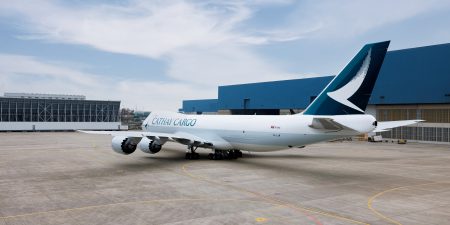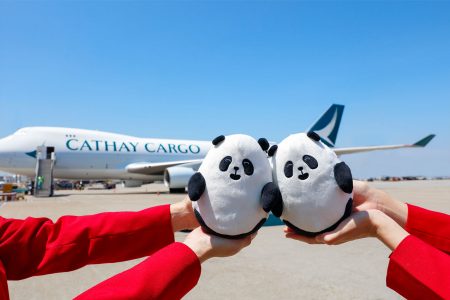Two very important pandas (VIPs) arrived in Hong Kong in September as a gift from the Chinese Mainland’s Central Government announced in July. This gift commemorates the 27th anniversary of the city’s return to Chinese sovereignty in the 75th year since the foundation of the People’s Republic of China. This was a very big deal for Hong Kong, a moment of great civic pride, and for Cathay Cargo, entrusted with their safe carriage from Sichuan to their new home at Ocean Park, a huge responsibility proudly accepted.
Cathay Cargo had previously carried giant pandas to and from Chengdu to zoos across the world, but this was to be special for one principle reason, as Wendy Ge, Head of Cargo Chinese Mainland explains. ‘The pandas we recently carried to Hong Kong are a little different to the pandas we’ve carried to other locations around the world as part of the conservation programme,’ she says. ‘These were the third pair of pandas gifted by the Central Government after 1997 and 2007 respectively and will spend their entire lives in Hong Kong.’
There were many moving parts to coordinate and many stakeholders, including the Hong Kong SAR Government’s Culture Sports and Tourism Board, and Ocean Park – the new home of the two VIPs, An An and Ke Ke (until their names are changed following a citywide renaming competition). The China Conservation and Research Centre for the Giant Panda in Sichuan where they lived previously was also involved, alongside Hong Kong International Airport (HKIA), and all the Cathay Cargo teams in Chengdu and Hong Kong, and their associated contractors, among many others.
The aim of the early meetings was to establish the basic requirements for the shipment. ‘After the kick-off meeting, I then relayed the information to our partners like Cathay Cargo Terminal and ground-handling company HAS,’ says Max Mak, Cargo Operation Centre Manager. ‘Then we kept in touch with everyone to ensure that the requirements for the shipment could be acted on and built into the process.’
In Chengdu, Cargo Services Manager – Chinese Mainland Ricky Jiang and Cargo Manager Angela Shan collated the requests and requirements at origin as they came in. ‘We were the primary consolidator for requests,’ says Shan.
One of the decisions was to use the regular Boeing 747 freighter from Chengdu for the two-hour flight rather than a passenger aircraft, which is more compact beneath the cabin. But as Mak explains, for the arrival to coincide with a plane-side reception ceremony, it would be best to adjust the schedule so that it arrived later in the morning at a more convenient time for the human dignitaries rather than the early hours. This required some coordination with the Chinese Mainland aviation regulator for slots and permissions.





